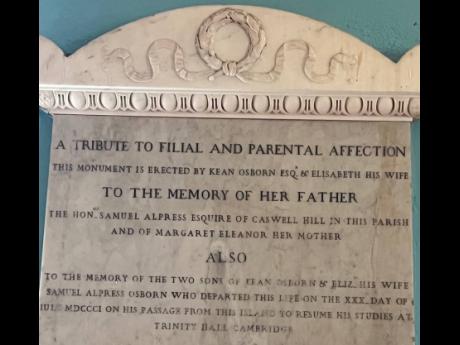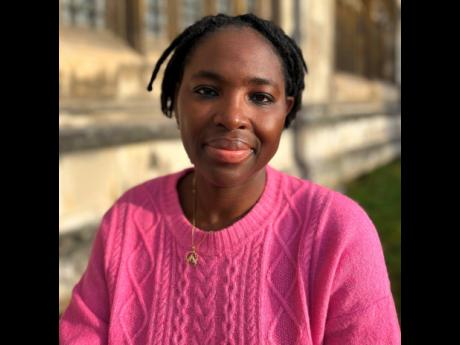Sabine Cadeau | Jamaica and legacies of enslavement inquiry
On February 17, the Centre for Reparation Research at The University of the West Indies convened a public seminar to discuss the University of Cambridge’s “Legacies of Enslavement Report”. This was the first major public seminar focused exclusively on the University of Cambridge’s advisory group report.
As one of the authors of the final report, I had the unique opportunity to present my work and hear the important comments and critiques of Professors Carolyn Cooper, Rupert Lewis, Rev. Dr. Stephen Jennings, and Prophet Greg.
One of the main questions that circulated at the conference and that indeed circulates more widely is whether Jamaica will ever benefit from this research? Or better put, what is the point of a commissioned research project on a university’s financial and other links with slavery and colonialism? Will this research ever bring about meaningful reparation for former plantation colonies, and if so, how?
As the principal researcher, hearing doubts from the audience about whether ongoing historical investigation into the financial legacies of slavery can or will ever have any impact was an important experience. Engagement with the public reminds me to think more seriously about whether waves of slavery inquiries in universities, churches, and governments really matter. However, as I remain engaged in open debates about the reparations cause, I also want to use this medium to respond in more depth to the audience’s curiosity about the research, especially about the vast range of connections between colonial Jamaica and the University of Cambridge. Jamaica had a range of connections with the University of Cambridge. Beyond feeding the flows of tuition and fees at the University of Cambridge, especially the higher fees paid by privileged college ‘pensioners’ and ‘fellow-commoners,’ Jamaican colonial wealth made its way to Cambridge in multiple forms. My central argument in the report was that The University of Cambridge’s most important financial exposure to Atlantic slavery was its many systematic involvements with the South Sea Company (SSC).
This royally chartered colonial joint stock company was founded in 1711, and in 1714, it was granted the Asiento or monopoly to trade slaves to Spain’s Latin American colonies. It trafficked an estimated 63,000 or more enslaved Africans over nearly 30 years. It coined Britain’s currency in 1723, and it was briefly used to consolidate Britain’s entire national debt. Recipient of one of the first ever government bailouts, its repackaged financial instruments, the South Sea Annuities, became a staple, fixed-income asset within the British financial system. While the company’s slave-trading activity stopped in 1740 due to war, the government and the Bank of England kept the South Sea assets alive through keeping up regular dividend payments.
MADE EXTENSIVE USE
Nearly every historic institution at Cambridge, including the central university itself, owned and made extensive use of South Sea capital for over a century. Indeed, this capital survives both in the form of buildings and lands purchased with it but also because its dividend-paying assets were converted to other quality government bonds when they formally ceased to exist in 1853. The South Sea wealth has never gone away and can be connected forensically to a great many assets still on the accounts of many institutions.
My presentation on the South Sea Company fed an exciting dialogue with Jamaicans from all walks of life, many of whom are fellow scholars contributing to a growing literature that sees well beyond the idea that the story of the South Sea Company begins and ends with the 1720 bubble and bust.
Archaeologist O’Shane Robinson brought in a new analysis on the ways in which speculators such as Lord Portland, who had lost money in the South Sea bubble of 1720, went to Jamaica to invest directly in the growing plantation economy as the surest means of recovering from South Sea losses. Renowned scholars in fields as diverse as mathematics, physics, and poetry became significant South Sea Company investors and some left South Sea Company annuities to Cambridge colleges and the central university. These South Sea donations were used to endow professorships, support the regular activity of libraries and chapels, and erect monuments.
England’s 1723 coinage bore the ‘SSC’ mark of the South Sea Company. The University of Cambridge and nearly all if not all of its old colleges owned South Sea capital at the height of the company’s involvement in the transatlantic slave trade in the eighteenth century and for over a century after. All historic South Sea Company investments at Cambridge and elsewhere represent a close historical connection to Jamaica as Jamaica was the main base of operations for the South Sea Company’s profitable slave trade.
PLANTATION CONNECTION
The South Sea Company assets represented general, abstract connections with Jamaica’s strategic commercial importance to Britain, but many Cambridge figures were from Jamaica and were directly involved in Jamaica’s growing plantation economy. Many of the donors who gave bequests to Cambridge owned plantations in Jamaica.
Perhaps the most significant dynasty of colonial West Indies magnates were the Gladstones of Liverpool, the family of Prime Minister William Ewart Gladstone. By 1809, the patriarch, John Gladstone, was chairman of the Liverpool West Indian Association. He acquired his first sugar plantations in Demerara, but he soon purchased six different plantations in Jamaica.
The Gladstones were among the biggest recipients of compensation with well over 3,000 enslaved people on multiple plantations in Guiana and Jamaica. They were among the most prominent pro-slavery parliamentarians. Their Atlantic commercial empire was the economic foundation of their political dynasty, and it also gave rise to quite a prominent academic legacy.
Many planters from Jamaica educated their children at the University of Cambridge as they did at institutions like Eton, Harrow, and Oxford and on to the inns of court. Aristocratic families married their children to colonial heirs and heiresses and generated synergies of ‘gentlemanly capitalism’.
Many of the prominent clergy and colonial administrators in the West Indies, like the chaplain and secretary to Governor Portland, attended Cambridge, and some like Howe Peter Brown, second Marquess of Sligo who entered Jesus College, Cambridge, in 1801, was immortalised as Governor Sligo of Jamaica in emancipation and the early free village of Sligoville. Yet Sligo received £5,526 of compensation for 586 enslaved people he owned, made use of the military and the lash to try and bring about an “orderly transition” from slavery to ‘apprenticeship,’ and introduced the notorious treadmill as a means of punishment.
What will these multiple and prolonged connections between Jamaica and the University of Cambridge mean? How valid are concerns and critiques that these universities are trying to control and manage the narratives; that there is a pattern of institutions essentially pledging donations to themselves? Clearly, for this report to have legitimacy, Jamaica has to be at the forefront of reparations conversations at the University of Cambridge and other British universities. As the University of Cambridge prepares to establish a new centre for the study of slavery and its legacies, it might consider including and providing research opportunities to students in the Caribbean who are interested in exploring for themselves the history of slavery at the University.
Sabine F. Cadeau is a research fellow for the Legacies of Enslavement project at the University of Cambridge. Send feedback to sc2122@cam.ac.uk or reparation.research@uwimona.edu.jm


